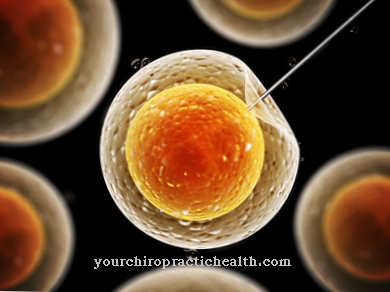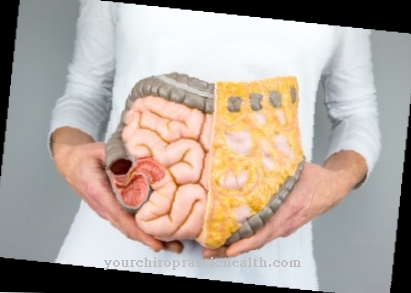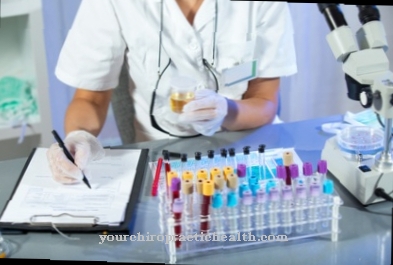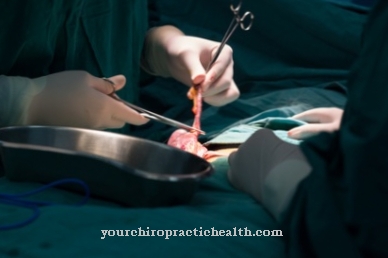Under one Intrauterine insemination (IUI) describes a method of so-called assisted fertilization. This has very little to do with artificial insemination, as there is no fertilization between the egg and sperm cell outside the body. Depending on the cause of the unfulfilled desire to have children, the success rate - per cycle - is 15 percent.
What is intrauterine insemination?

In intrauterine insemination or the Intrauterine fertilization sperm cells are processed and passed into the uterus or uterus at the time of female ovulation. Thus it is possible that the sperm cells are brought very close to the egg. That procedure was formerly known as artificial insemination (AI); today, however, intrauterine fertilization has lost this status.
The stimulation of the ovaries is often promoted and triggered by medication. However, the stimulation is mild; Compared to artificial insemination, the woman receives only a fraction of the drugs and active ingredients. Intrauterine fertilization is mainly used when the partner does not have enough functioning sperm or there are problems with sexual intercourse. Furthermore, intrauterine insemination is also carried out for donated sperm from outside sources.
Function, effect & goals
That treatment is given when the man has healthy but decreased viable sperm. If there is such a restriction that even intrauterine fertilization can no longer be used, doctors recommend in vitro fertilization (IVF) or intracytoplasmic sperm injection (ICSI). Intrauterine fertilization is also performed on women who do not have a partner. Thus, the sperm from the sperm bank is used.
Ovulation stimulation is usually not recommended. This is because - in the context of fertilization - it is only about the infertility of one partner or the infertility often has no (obvious) reason at all. Anyone who nevertheless opts for stimulation automatically runs an increased risk of multiple pregnancy.
If the doctor - in consultation with the patient - decides on a natural cycle, intrauterine fertilization is carried out in such a way that it is applied at the time of ovulation. The doctor determines the right time by means of ultrasound examinations and hormone determinations. As a rule, fertilization takes place between the 12th and 15th day of the menstrual cycle. If the doctor recommends a stimulated cycle, medication is taken to help the eggs mature. Those are prescribed as tablets or in syringes.
Here, too, ultrasound examinations are carried out so that the doctor can recognize whether the egg cells are ripening and what time to choose for fertilization. Ovulation is triggered by a syringe (so-called human chorionin gonadotrophin syringe, which contains the hCG hormone). The partner, on the other hand, must provide a sperm sample; this can sometimes be "washed" so that the medical professionals can find the best sperm. Then the doctor places the sperm - using a catheter - in the cervix.
If the reasons for the unfulfilled desire to have children are not known or not clear, a larger amount of fluid is used, among other things, so that the sperm can slide more easily through the fallopian tubes. This technique ensures that the treatment lasts a few minutes longer. However, the statistics show that this procedure often brings with it higher chances.
After the treatment, the woman rests. Nevertheless, life must go on in the usual way. After around two weeks, a pregnancy test will tell you whether the attempt worked or not. The success rate of intrauterine insemination also depends on the reasons for infertility. Sometimes age also plays an important role. Even problems with the cervical mucus - in conjunction with any sperm problems - can very well reduce the success rate. According to statistics, the success rate - with the help of medication - is around 15 percent per cycle. If, for example, no pregnancy has occurred during the first three attempts, the chances that fertilization will work in this way are very slim. After that, however, the ways of artificial insemination are open.
Risks, side effects & dangers
Due to the fact that the point in time - in the context of intrauterine fertilization - is extremely important, the partner must of course be able to produce sperm when it is "his turn". This can sometimes be a psychological burden for many men. Furthermore, many women find the insertion of the catheter uncomfortable. Many patients also complain of enormous psychological stress as part of the procedure.
If, for example, cycles are stimulated, there is also the risk of ovarian hyperstimulation syndrome - the so-called OHSS - occurring. The ovaries react very strongly to the drugs, which are subsequently responsible for ovulation. As the process progresses, the ovaries swell; Fluid penetrates the woman's abdomen. This means that weight is gained, the woman feels bloated and complains of a feeling of fullness.
However, that risk is very low with intrauterine inseminations, since the stimulations - if they are carried out at all - are very gentle and mild. In the end, the doctors try to create a maximum of one or two follicles. If hyperstimulation is suspected, the doctor must be consulted. During hyperstimulation, intrauterine insemnation should be avoided.












.jpg)



.jpg)










.jpg)
